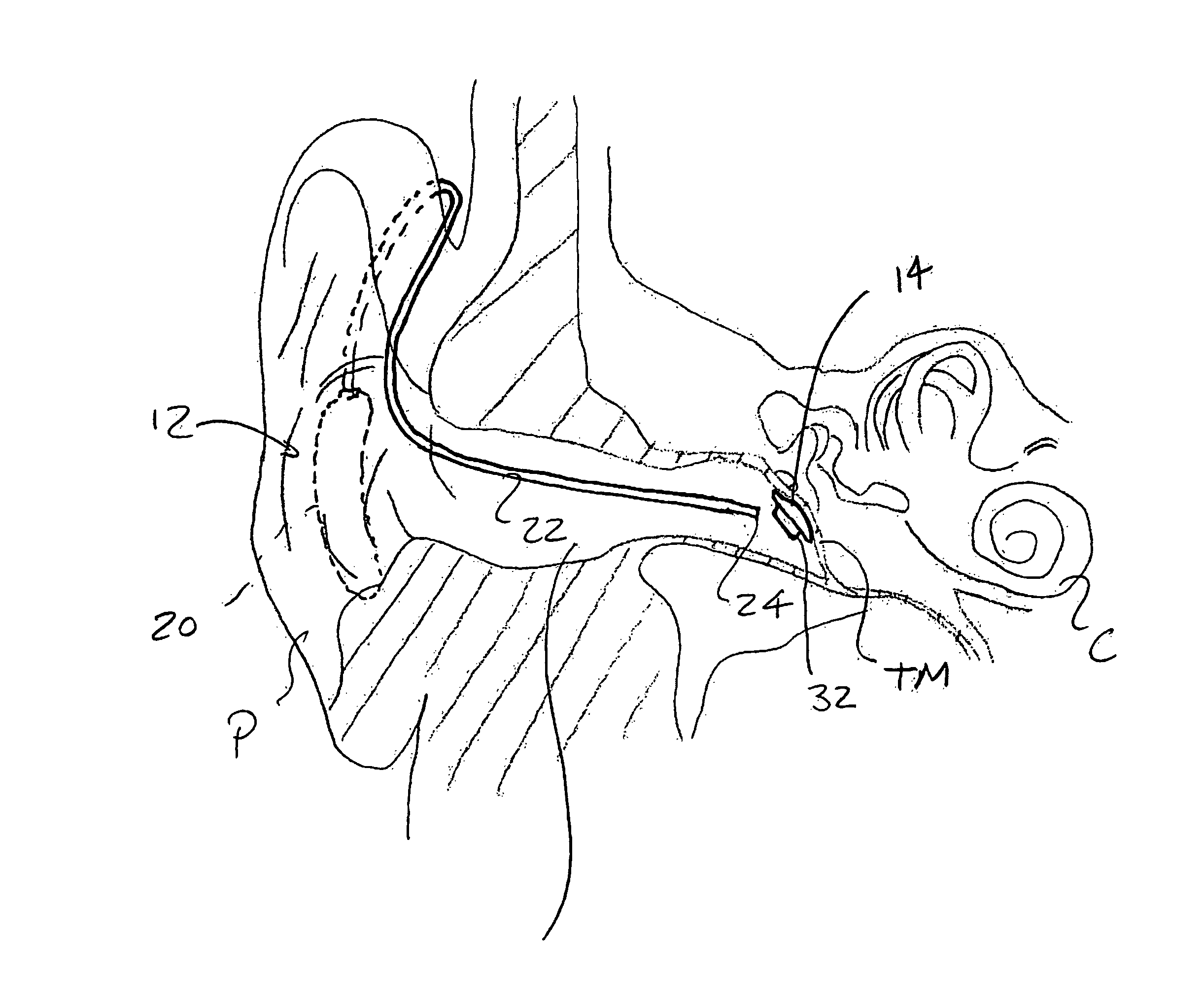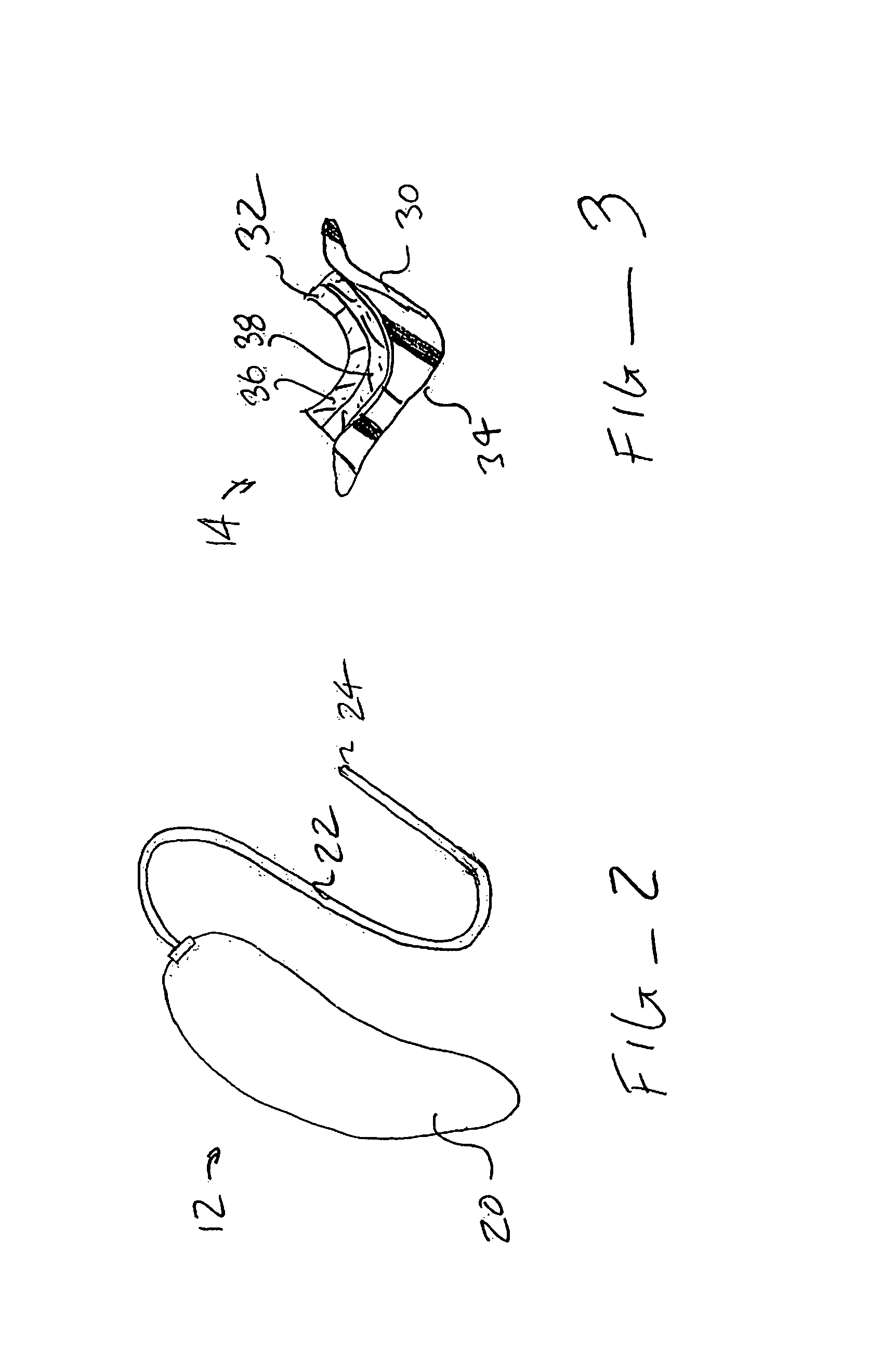Systems and methods for photo-mechanical hearing transduction
a technology of photo-mechanical and sound transduction, applied in the direction of optical signal transducers, implantable hearing aids, ear supported sets, etc., can solve the problem of mechanical or electrical failure of the connection between the light transmission component and the output transducer assembly
- Summary
- Abstract
- Description
- Claims
- Application Information
AI Technical Summary
Benefits of technology
Problems solved by technology
Method used
Image
Examples
Embodiment Construction
[0050]As shown schematically in FIG. 1, systems 10 constructed in accordance with the principles of the present invention will comprise an input transducer assembly 12 and an output transducer assembly 14. The input transducer assembly 12 will receive a sound input, typically either ambient sound (in the case of hearing aids for hearing impaired individuals) or an electronic sound signal from a sound producing or receiving device, such as the telephone, a cellular telephone, a radio, a digital audio unit, or any one of a wide variety of other telecommunication and / or entertainment devices. The input transducer assembly will produce a light output 16 which is modulated in some way, typically in intensity, to represent or encode a “light” sound signal which represents the sound input. The exact nature of the light input will be selected to couple to the output transducer assembly to provide both the power and the signal so that the output transducer assembly can produce mechanical vib...
PUM
 Login to View More
Login to View More Abstract
Description
Claims
Application Information
 Login to View More
Login to View More - R&D
- Intellectual Property
- Life Sciences
- Materials
- Tech Scout
- Unparalleled Data Quality
- Higher Quality Content
- 60% Fewer Hallucinations
Browse by: Latest US Patents, China's latest patents, Technical Efficacy Thesaurus, Application Domain, Technology Topic, Popular Technical Reports.
© 2025 PatSnap. All rights reserved.Legal|Privacy policy|Modern Slavery Act Transparency Statement|Sitemap|About US| Contact US: help@patsnap.com



